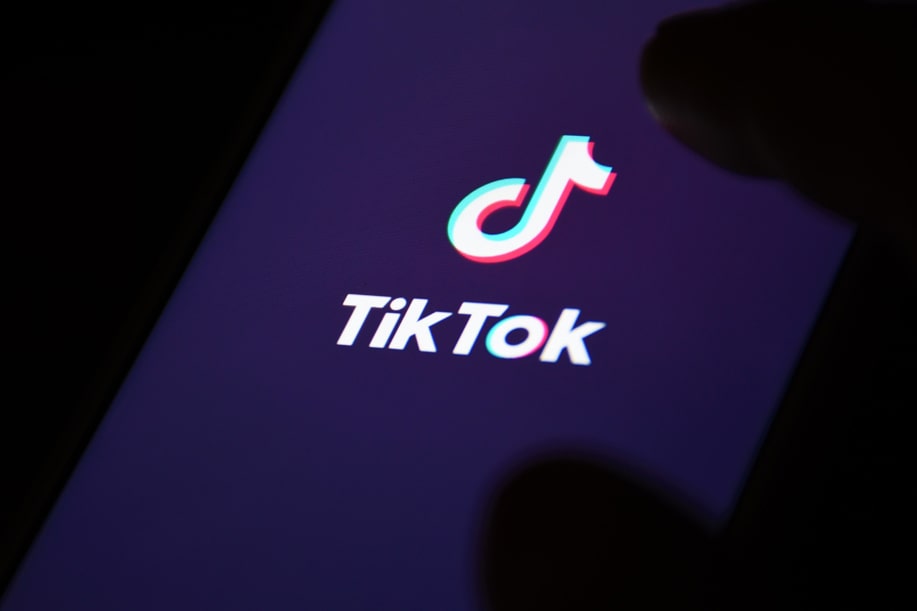Launched in 2016, TikTok has experienced an exponential rise, reshaping the social media landscape in a few short years. Originally seen as a platform for entertaining short-form videos, it has swiftly evolved into a robust marketing hub. With over 1 billion active users worldwide as of 2021, TikTok’s appeal lies in its dynamic content, interactive features, and powerful algorithm that delivers personalized content to each user. Marketers have quickly recognized its potential to connect with diverse audiences, especially the younger generations, offering an unparalleled opportunity to build brand awareness and customer engagement in a creative and compelling way.
Importance of Gen Z and Alpha in the Current Marketing Landscape
Generation Z (born between 1997 and 2012) and Generation Alpha (born since 2013), although young, already exert substantial influence over family purchases and brand preferences. Moreover, they’re set to be the most significant consumer cohorts in the coming years. Today, Gen Z and Alpha represent a considerable portion of TikTok’s user base. These generations are digital natives who grew up with technology, they seek authenticity, and appreciate social causes. Their presence, influence, and unique characteristics make them a crucial target audience for brands and marketers.
Aim of the Article
In this comprehensive guide, we will delve into the innovative world of TikTok marketing and how it provides a pivotal platform to reach and resonate with Gen Z and Alpha effectively. We’ll explore the rise of TikTok, unpack the mindset of these younger generations, discuss the elements of a successful TikTok marketing strategy, and share practical tips for creating content that both captivates and engages these audiences. Additionally, we’ll look at the future of TikTok and social media marketing, providing insight into how this platform is likely to shape marketing strategies in the coming years. This article aims to equip advanced marketers with the necessary knowledge and tools to thrive in the ever-evolving TikTok marketing landscape.
Understanding TikTok, Gen Z, and Alpha
Demographics and Behavior of Gen Z and Alpha on TikTok
TikTok has become the digital playground of choice for Gen Z and Alpha, with over 60% of its global users being under 30 years of age. These users are not just passively scrolling but are actively engaged, spending an average of 52 minutes per day on the app, with many using it multiple times a day.
These generations are not just consumers but creators too. TikTok’s user-friendly interface and creative tools encourage users to actively participate in content creation, be it participating in the latest dance challenges, making a humorous skit, or sharing their unique skills or ideas.
Why TikTok Appeals to Gen Z and Alpha
Several key factors make TikTok particularly appealing to Gen Z and Alpha:
- Authenticity: Unlike traditional social media platforms that often highlight polished, picture-perfect lives, TikTok celebrates real, unfiltered content. It’s this raw authenticity that resonates strongly with Gen Z and Alpha, who value transparency and honesty.
- Creativity and Self-expression: TikTok offers a plethora of creative tools, such as filters, effects, and a vast music library, which empowers users to create unique content and express their individuality.
- Community and Engagement: TikTok has a strong sense of community, where users can connect and engage over shared interests, experiences, and challenges. This sense of connection and the ability to engage directly with content via duets, stitches, and comments is highly valued by these generations.
- Trends and Virality: The rapid pace of TikTok, where trends can start and explode in popularity overnight, keeps the platform fresh and exciting. Gen Z and Alpha are at the forefront of these trends, driving virality.
The Significance of TikTok’s Algorithm
TikTok’s recommendation algorithm, often referred to as the “For You” algorithm, plays a significant role in the platform’s success. This AI-powered algorithm curates a personalized content feed for each user based on their previous interactions, including the videos they’ve liked, shared, created, and watched all the way through.
This highly personalised user experience ensures that TikTok’s content is always relevant and engaging, keeping users on the app for longer. From a marketing perspective, it also offers an opportunity for brands to get their content in front of the right audience. Understanding and leveraging this algorithm is a key aspect of reaching Gen Z and Alpha effectively on TikTok.
The Rise of TikTok as a Marketing Powerhouse
Discuss the Growth of TikTok
In just a few years, TikTok has grown at an unprecedented rate, transforming from a newcomer to a dominant force in the social media sphere. Initially launched in China as Douyin in 2016, and internationally as TikTok in 2017, it soon witnessed staggering growth. By 2020, it was the most downloaded app worldwide, and as of 2021, boasts over 1 billion users globally.
This rapid expansion has been driven by the app’s unique offering of short-form, user-generated content and its powerful, personalised algorithm. Its growth has been particularly pronounced among the younger generations – Gen Z and Alpha – who have been captivated by its innovative format, creative freedom, and dynamic trends.
Present Successful Case Studies of Brands who Leveraged TikTok
There have been numerous successful marketing campaigns on TikTok, with brands across various industries harnessing its potential to reach and engage audiences.
For instance, Gymshark, the UK-based fitness apparel brand, amassed millions of followers on TikTok through their #Gymshark66 challenge, which encouraged users to form positive habits over 66 days. The challenge was a massive success, generating hundreds of millions of views and a surge in brand engagement.
Another notable example is e.l.f. Cosmetics, who launched a viral campaign with their original song “Eyes. Lips. Face.” The catchy tune and associated challenge not only went viral on TikTok, but crossed over into the mainstream, even making it onto Spotify’s top viral songs, demonstrating the powerful ripple effect of successful TikTok marketing.
Compare TikTok’s Marketing Capabilities with Other Social Media Platforms
While each social media platform has its unique strengths and user demographics, TikTok offers some distinctive advantages for marketers.
Unlike Facebook and Instagram, which are largely driven by the user’s established network, TikTok’s algorithm promotes content based on user interests, making it easier for brands to reach new audiences. Its short-form video format provides a compelling way to grab user attention and is particularly suited to the decreasing attention spans of modern internet users.
Furthermore, TikTok’s younger demographic, encompassing a significant proportion of Gen Z and Alpha, gives brands an opportunity to connect with these influential cohorts early. This is a differentiator, especially in comparison to platforms like Facebook, where the user base skews older.
Lastly, the potential for virality on TikTok is exceptional. The platform’s structure, trend-driven nature, and powerful algorithm combine to offer an unparalleled opportunity for content to go viral, something that is harder to achieve on platforms like LinkedIn or Twitter.
However, it’s important to note that a successful marketing strategy typically involves a multi-platform approach. While TikTok offers unique advantages, other platforms also provide value, and the best platform for a brand largely depends on where their target audience is most engaged.
Unpacking the Mindset of Gen Z and Alpha
Key Characteristics and Preferences of Gen Z and Alpha
Generation Z and Alpha are often characterised by their tech-savviness, value for authenticity, and desire for interactive, engaging content. Raised in a digital world, these generations are more comfortable with technology than any before them.
- Tech-Savvy: Gen Z and Alpha are digital natives who have grown up with smartphones and tablets. They are comfortable using multiple devices and are quick to adopt new technologies.
- Value for Authenticity: These generations appreciate real, unfiltered content. They favour genuine engagement and authentic influencers over heavily curated feeds and hard-sell advertising.
- Interactive Content: Gen Z and Alpha enjoy content that allows them to participate and engage. This includes user-generated content, interactive experiences, and trend-driven challenges.
- Social Awareness: These generations are conscious of global issues and societal causes. They are more likely to support brands that align with their values and take a stand on important issues.
Their Consumption Habits on Social Media and TikTok Specifically
Gen Z and Alpha are heavy users of social media, but their usage differs from older generations. They are more likely to create and share content, participate in trends, and engage with brands directly.
On TikTok, these generations are not just passive consumers; they are active participants. They spend a significant amount of time on the platform, with many visiting the app multiple times a day. This active engagement presents a valuable opportunity for brands to connect with these audiences on a deeper level.
Discuss the ‘Authenticity’ Factor and its Importance to these Generations
Authenticity is key for Gen Z and Alpha. They seek transparency and honesty from brands and are quick to call out those that come across as inauthentic.
On TikTok, authenticity is often expressed through raw, unedited content that reflects real-life moments and genuine emotions. Brands that want to engage these generations need to embrace authenticity, both in their marketing campaigns and in their broader business practices. This includes demonstrating a commitment to social causes, showing behind-the-scenes content, and promoting real, relatable people over perfectly polished influencers.
In essence, Gen Z and Alpha are looking for brands that align with their values, understand their world, and speak their language. Achieving this requires a deep understanding of these generations and a willingness to engage with them on their terms.
Elements of a Successful TikTok Marketing Strategy
Creating Engaging Content: Challenges, Duets, Trends, etc.
Creating engaging content is key to succeeding on TikTok. Brands should aim to participate in and leverage the platform’s trends, like viral challenges and duets, while also adding their unique twist to them. Challenges are particularly effective, as they encourage user-generated content and promote social sharing.
Equally, duets allow brands to engage directly with users and influencers, fostering a sense of community and interaction. Incorporating humour, relatability, and creativity in your content can significantly enhance its engagement and virality potential.
Leveraging Influencers and TikTok Creators
Influencer marketing is incredibly effective on TikTok due to the authentic, personal relationships influencers share with their followers. When selecting influencers, brands should focus on those whose values and style align with their own. It’s not just about follower count; it’s the quality of the engagement and the influencer’s fit with the brand that matters.
Furthermore, TikTok’s Creator Marketplace is an official platform for brand and creator collaborations, making it easier for businesses to find and partner with relevant TikTok creators.
TikTok Advertising: In-feed Ads, Branded Hashtag Challenges, TopView Ads, etc.
TikTok offers a range of advertising options. In-feed ads appear in the user’s ‘For You’ feed, blending in with organic content. These ads can include calls-to-action, making them a valuable tool for driving conversions.
Branded Hashtag Challenges, on the other hand, encourage user participation and content creation around a specific theme or challenge set by the brand. They provide excellent reach and engagement and can help create a buzz around the brand or a particular product.
TopView ads, which appear when users first open the app, offer maximum reach and impressions, capturing user attention immediately.
Utilising the Power of Music and Sound on TikTok
Music and sound are integral to the TikTok experience. A catchy tune can be the driving force behind a viral trend or challenge, leading to widespread brand exposure. Brands can create their own original sounds or use popular tracks to increase the likelihood of their content getting picked up by the TikTok community.
Moreover, brands can use TikTok’s commercial music library and even collaborate with artists for exclusive track releases. A thoughtful approach to music and sound can significantly enhance a brand’s TikTok marketing strategy.
Practical Tips for Marketers to Reach Gen Z and Alpha on TikTok
Understanding the Language and Trends on TikTok
TikTok has its own culture, language, and trends. To effectively engage Gen Z and Alpha, marketers need to be in tune with this unique TikTok culture. This means keeping up-to-date with the latest trends, challenges, and viral songs on the platform. Brands should also familiarise themselves with the common terms, hashtags, and phrases used on TikTok. However, it’s crucial to ensure any usage of trends or language is authentic and fits naturally with your brand voice to avoid appearing out of touch or trying too hard.
Incorporating Storytelling and Narrative in Your Content
Despite the short format of TikTok videos, storytelling plays a crucial role. Gen Z and Alpha appreciate content that tells a story or shares a narrative – be it funny, inspiring, educational, or emotional. It’s this narrative that often makes content memorable and shareable. Storytelling can be achieved through creative use of video editing features, text overlays, voiceovers, and music.
Frequency and Timing of Posts: When and How Often to Post
Regular posting on TikTok is essential to maintain visibility and engagement. Most successful brands post at least once a day, and often more. It’s also important to experiment with timing. While TikTok’s global audience means there’s always potential for engagement, you may find specific times when your target audience is more active.
TikTok’s analytics can provide insight into when your followers are online, but it’s generally recommended to post at different times and days of the week to determine what works best for your brand.
Tips for Measuring Engagement and Success on TikTok
Measuring engagement and success on TikTok can be done through the platform’s built-in analytics for Pro accounts. Key metrics to track include:
- Follower Growth: This indicates how quickly your audience is growing over time.
- Video Views: The number of times your videos have been viewed during a specific period.
- Profile Views: The number of times your profile page was viewed during a specific period.
- Engagement Metrics: This includes likes, shares, comments, and average watch time of your videos.
- Trending Metrics: If running a Branded Hashtag Challenge, track the number of user-generated content, views, and engagement associated with the challenge.
While these metrics are helpful, it’s also important to align your measurement with your specific marketing goals. For instance, if your goal is to drive website traffic, you might track click-throughs from your TikTok profile or ads. Always keep in mind the end goal of your marketing strategy when assessing success.
Future Perspectives: TikTok and the Evolution of Social Media Marketing
Discuss How TikTok is Likely to Shape the Future of Social Media Marketing
TikTok’s meteoric rise and unique features are already shaping the future of social media marketing. It has popularised short-form, user-generated content and proven that authenticity and user engagement often outweigh high-production value.
In the coming years, we can expect to see other platforms adapting and innovating to keep up with the new standards set by TikTok. We may also see a shift towards more interactive and participatory marketing campaigns, as brands strive to replicate the high engagement levels seen on TikTok.
Furthermore, the use of AI in shaping user experiences, like TikTok’s powerful algorithm, is likely to become more prevalent across all social media platforms.
Predicted Trends for Gen Z and Alpha’s Usage of Social Media
In terms of Gen Z and Alpha’s social media usage, we can anticipate continued gravitation towards platforms that offer interactive, engaging experiences. They are likely to favour platforms that give them creative freedom and the ability to connect with others, share their voices, and make an impact.
Privacy and digital well-being are also likely to become increasingly important, with users preferring platforms that respect their privacy and offer features that promote healthy online habits.
We may also see a shift towards more socially-conscious content, as these generations are keenly aware of global issues and expect brands to demonstrate their commitment to various causes.
Importance of Keeping Up-to-Date with Evolving Trends and Platform Updates
The digital landscape is always evolving, and social media platforms are no exception. To stay ahead of the curve, marketers need to keep a pulse on the latest trends, updates, and features introduced by platforms like TikTok.
Keeping up-to-date is essential for understanding changing user behaviours and preferences, enabling brands to adapt their strategies accordingly. Additionally, it allows marketers to take advantage of new features and opportunities as soon as they arise, maximising their potential reach and engagement.
In this age of digital transformation, adaptability and continuous learning are key to maintaining a successful and effective social media marketing strategy.
Recap of the Importance of TikTok as a Marketing Tool for Gen Z and Alpha
In the world of social media marketing, TikTok has emerged as a powerhouse. Its distinctive appeal to younger generations – Gen Z and Alpha – and unique features make it a highly effective platform for reaching these influential demographics.
The platform thrives on authenticity, creativity, and user engagement, aligning perfectly with the preferences of these tech-savvy, socially-conscious generations. Its ability to create viral content, combined with the robust advertising capabilities, make TikTok an indispensable tool for marketers aiming to engage Gen Z and Alpha.
Final Thoughts on Adapting to the Rapidly Changing Marketing Landscape
The realm of social media marketing is in constant flux, shaped by evolving user behaviours, technological advances, and the emergence of new platforms. It’s an exciting, yet challenging landscape, requiring marketers to continuously learn, adapt, and innovate.
To thrive in this environment, brands need to stay up-to-date with the latest trends and platform updates, understand their audience deeply, and always aim for authentic and engaging content. Above all, the importance of connecting with audiences on a meaningful level, resonating with their values, and delivering content that adds value to their lives, remains a constant in the ever-changing social media marketing landscape.
As we move forward, TikTok will undoubtedly continue to play a significant role in shaping this landscape, offering opportunities for brands to connect with Gen Z and Alpha in impactful and engaging ways. It’s an exciting prospect for marketers ready to embrace the challenges and opportunities of this dynamic platform.






